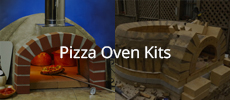I am starting to build a small (28" - 70cm) brick Neapolitan oven. I have read a lot about dome height but it seems such a small oven does not adhere to the ratios seen on larger ovens.
My tentative plan is to build a 31cm dome wiih a 14cm soldier course and a 19cm opening with a width of 38cm.
Any and all commments are welcome. I wan to make sure the dome height is neither too high nor too low given the small diameter of the oven.
Thanks in advance.
My tentative plan is to build a 31cm dome wiih a 14cm soldier course and a 19cm opening with a width of 38cm.
Any and all commments are welcome. I wan to make sure the dome height is neither too high nor too low given the small diameter of the oven.
Thanks in advance.





Comment